This rich homemade chicken stock is the perfect base for soups and stews and is made with the leftovers of rotisserie chicken with a generous splash of flavorful additions.
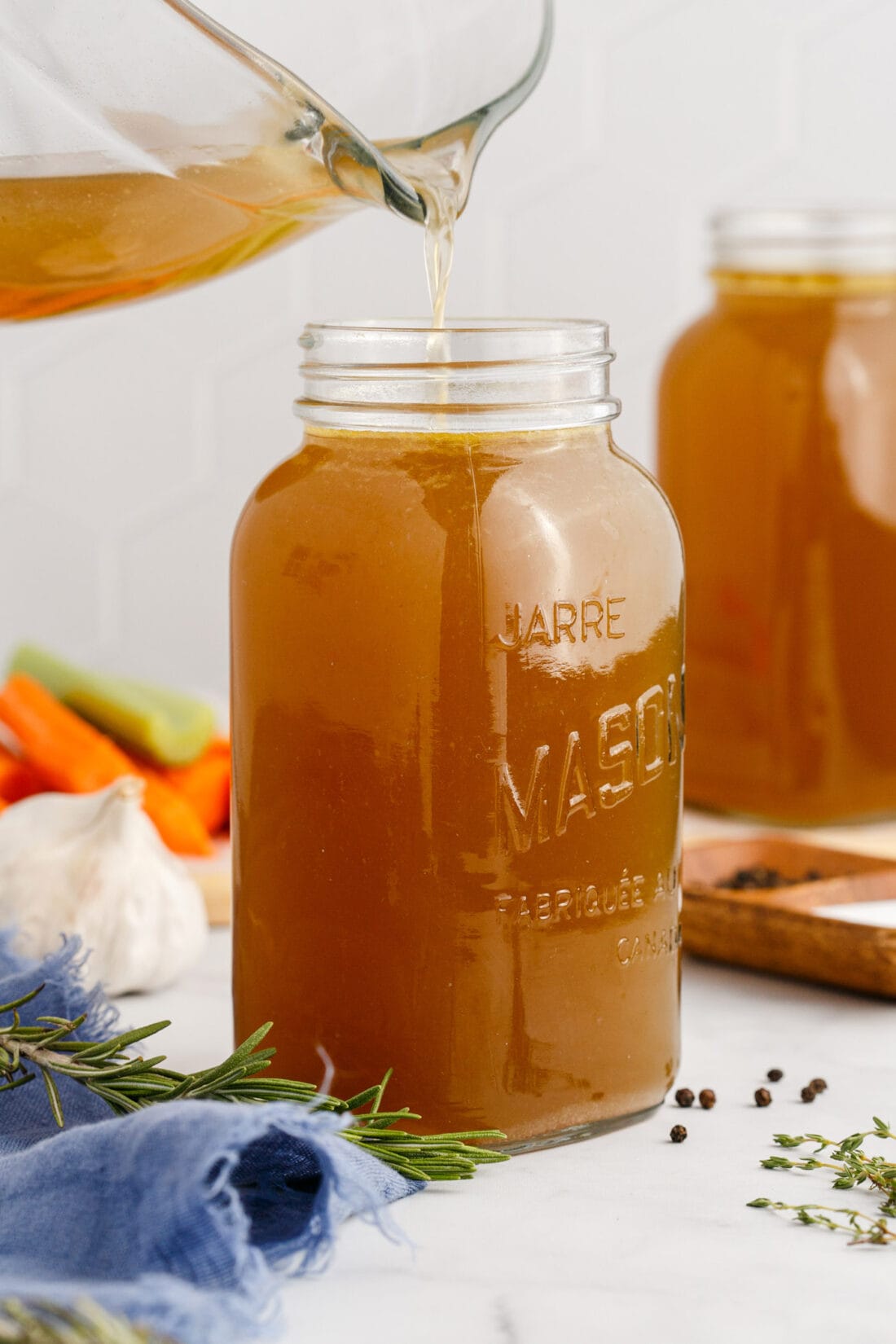
Why this recipe works
There’s really no better option than to make delicious homemade chicken stock with the leftover bones from your rotisserie chicken. Once you’ve shredded or picked through the meat to use in chicken tortilla soup or chicken and dumpling casserole, it feels like a shame to toss away the carcass when those bones can create a robust stock to incorporate into SO many different recipes. It’s like the gift that keeps on giving!
The layer of fat that forms on top is the collagen that breaks down from the bones, this is what aids in the thickness of the stock. For a more flavorful experience, we’ve added onions, carrots, celery, garlic, bay leaves, thyme, and rosemary for plenty of aromatic elements.
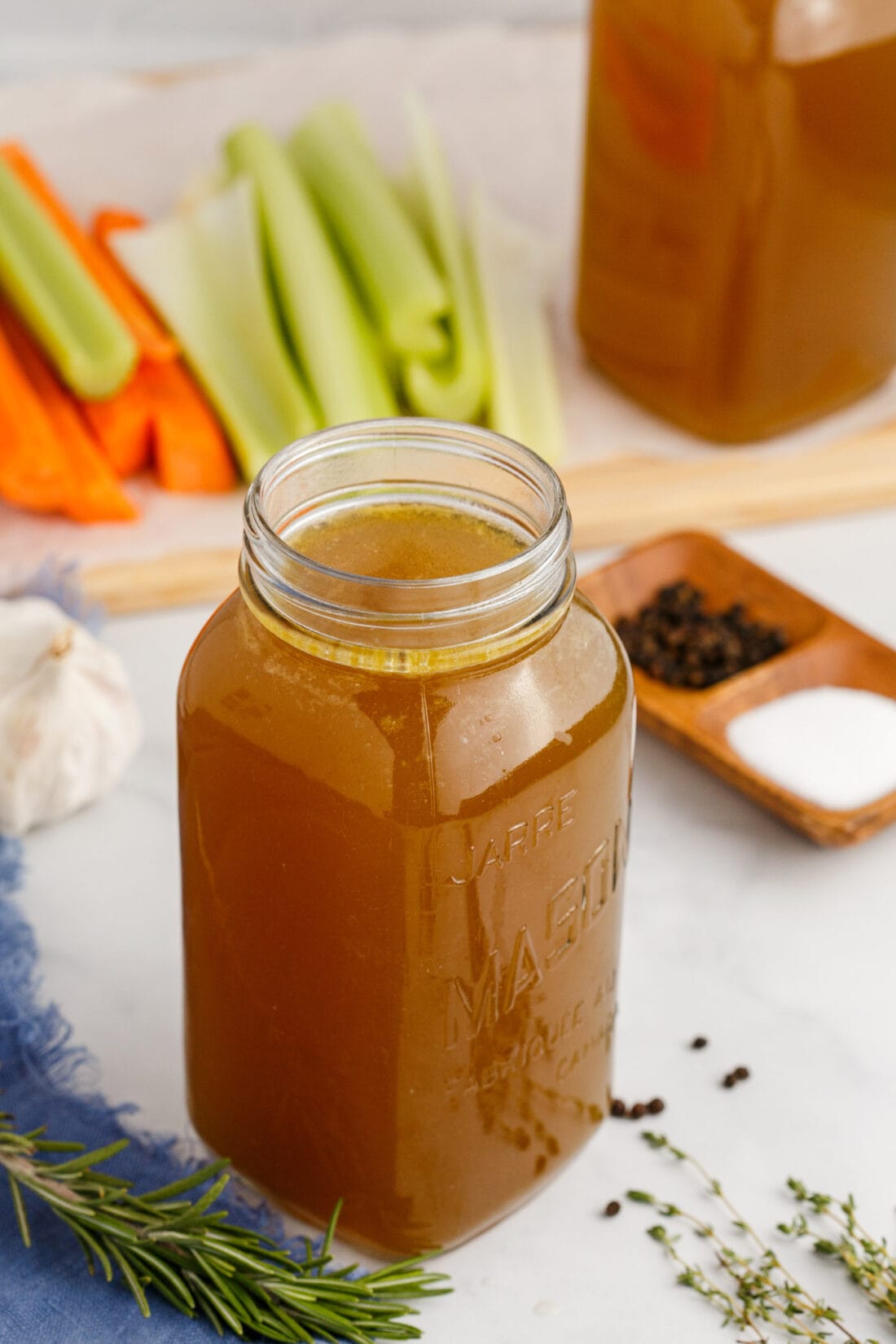
Ingredients you will need
Get all measurements, ingredients, and instructions in the printable version at the end of this post.
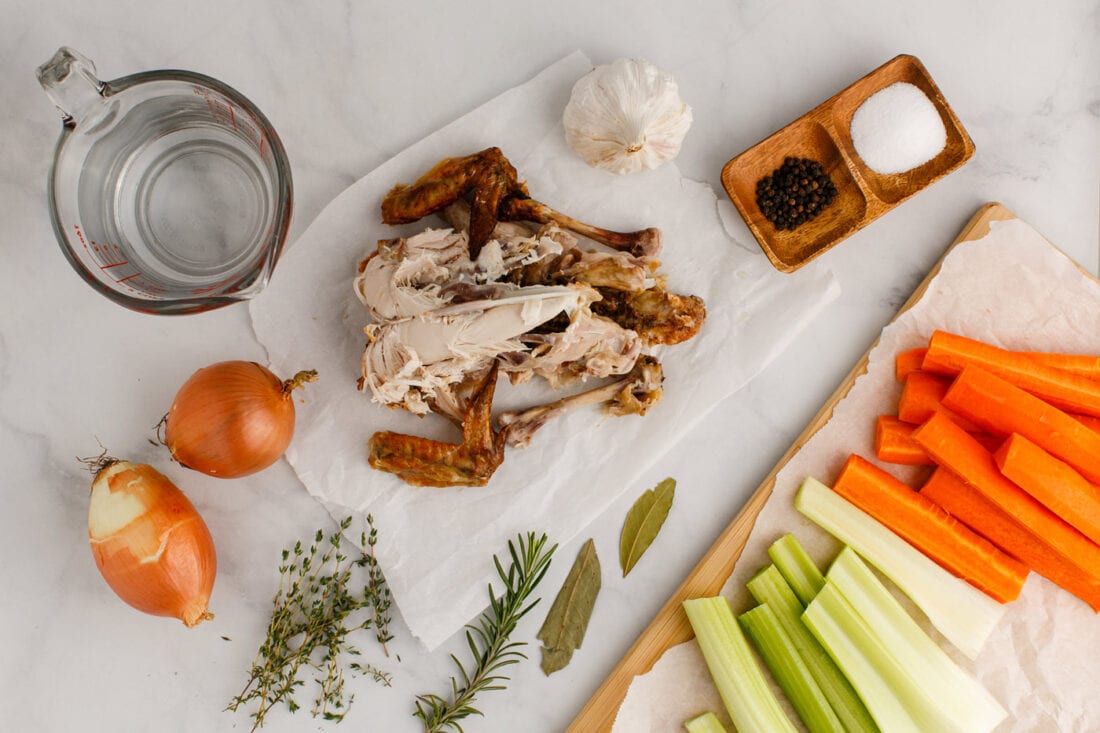
Ingredient Info and Substitution Suggestions
CHICKEN – This recipe uses the bones from two rotisserie chickens. You want the bones to be mostly picked of the meat, but not completely cleaned off. The meat will help add flavor to the stock. Making homemade chicken stock is the best way to use up rotisserie chicken!
VEGETABLES – Use whatever you have on hand, that’s the beauty of homemade stock. Of course, onions, carrots, and celery are a no-brainer but you can definitely add in any veggie scraps you have on hand as well.
How to Make Homemade Chicken Stock
These step by step photos and instructions are here to help you visualize how to make this recipe. You can Jump to Recipe to get the printable version of this recipe, complete with measurements and instructions at the bottom.
- In a large stockpot, place your chicken carcasses. You may need to break one down a little bit to help keep them lower in the pot.
EXPERT TIP – You will need a 14-quart stockpot or larger for a full batch, or a 7-quart stockpot for a half batch. In the step photos below, we used a 7-quart pot to make half a batch. - Add all your remaining ingredients plus 20 cups of water (or enough to almost cover the chicken. If you are stacking them, you will need to keep that in consideration).
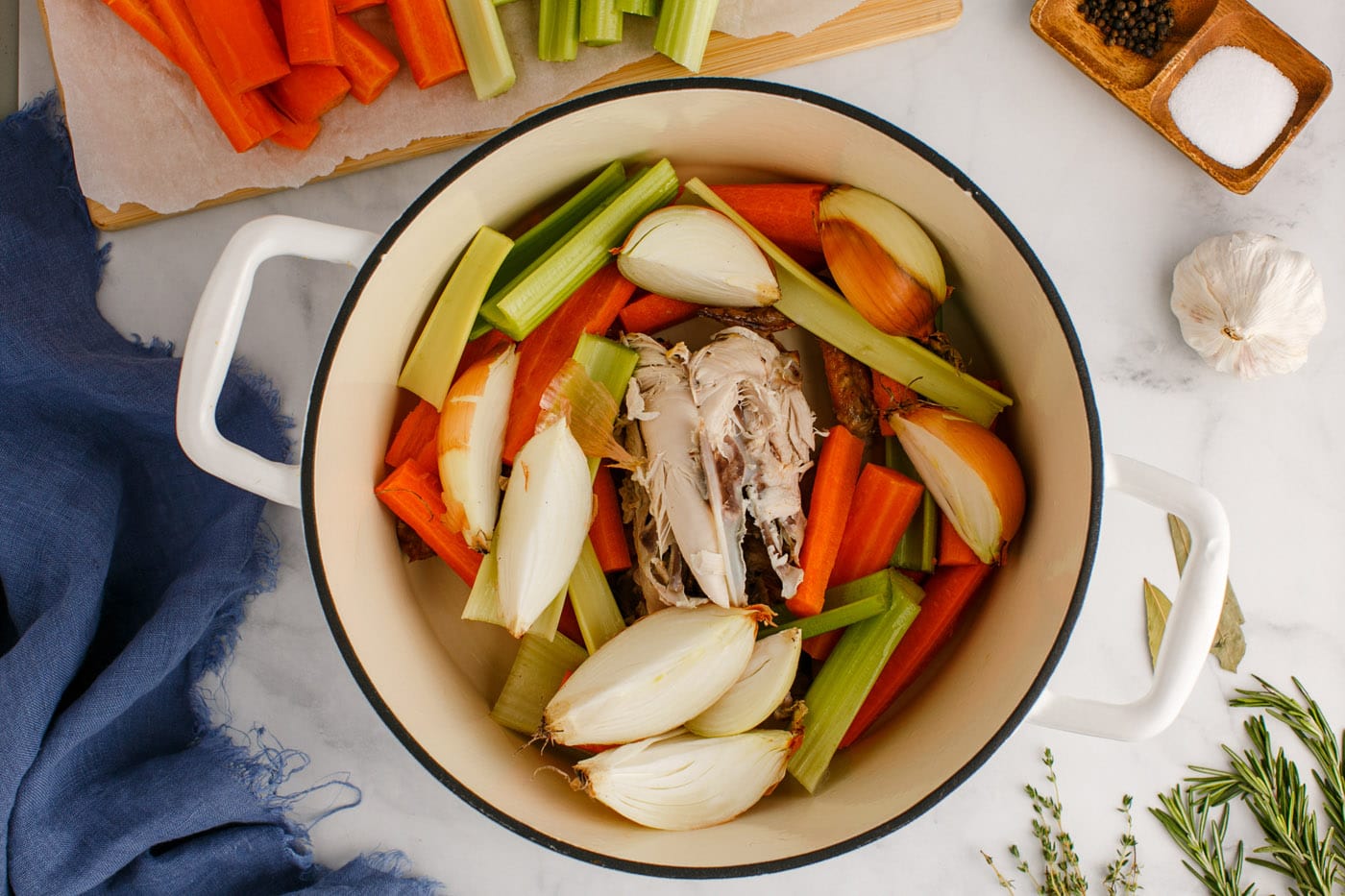
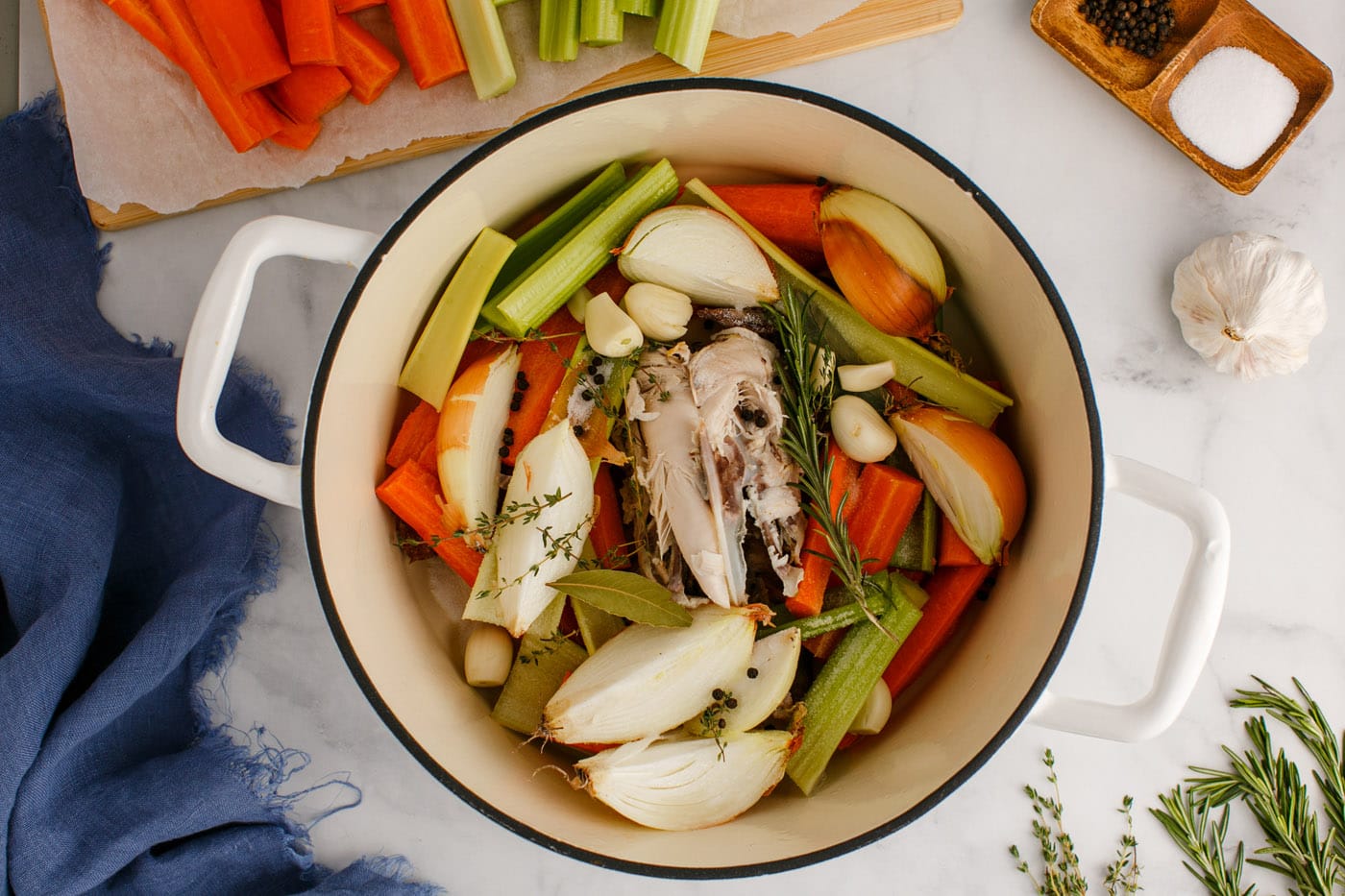
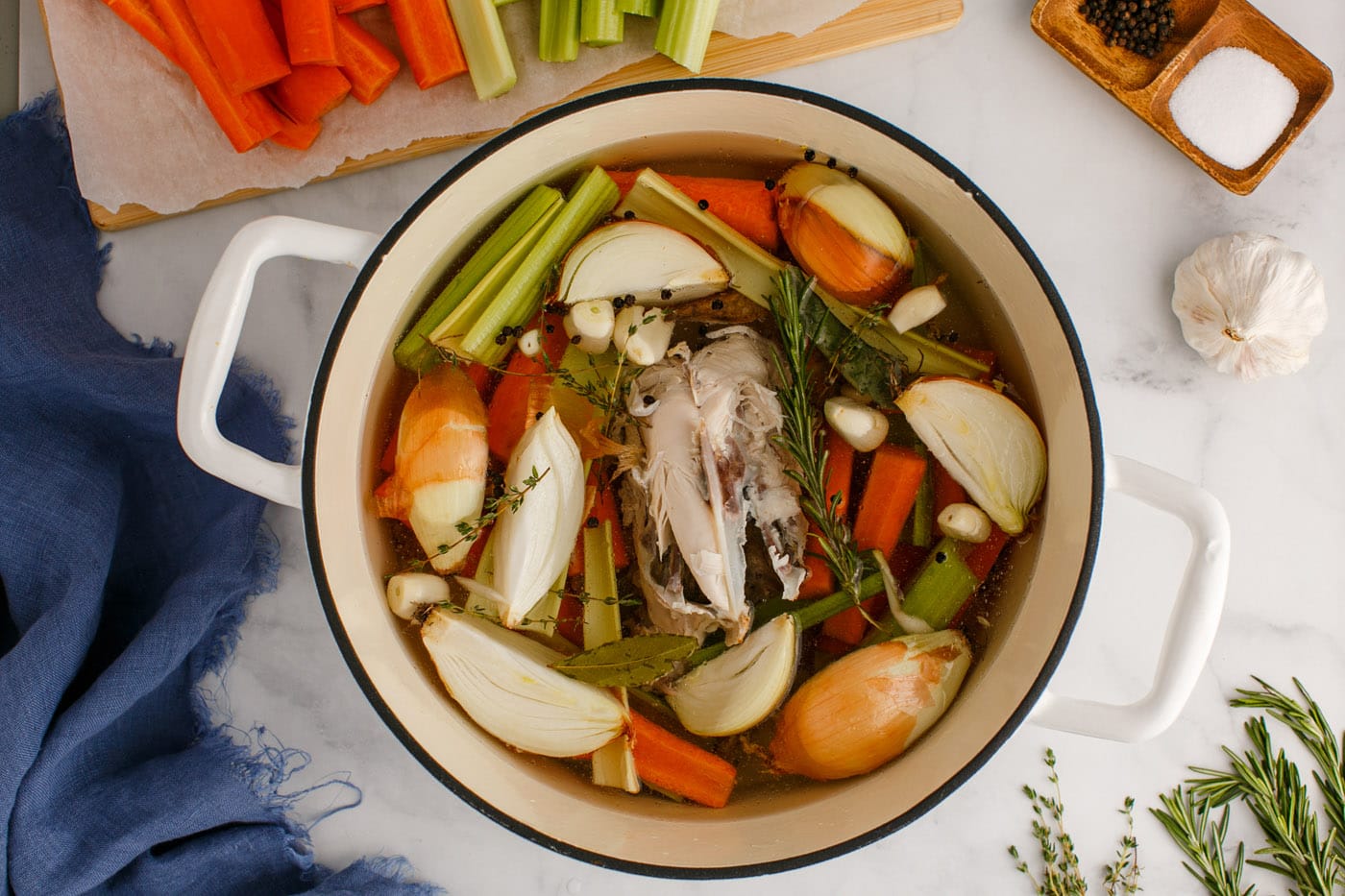
- Bring to a boil on medium-high heat, then reduce to low heat and simmer for 4 hours, uncovered. Taste the broth after 3 hours and add more salt if needed.

- Strain out any large pieces with a slotted spoon. Use a cheesecloth or a fine strainer to catch any smaller pieces. Repeat as needed. Spoon off any fat that rises to the top – sometimes it is easier to do this when it is cool as the fat will harden on the top.
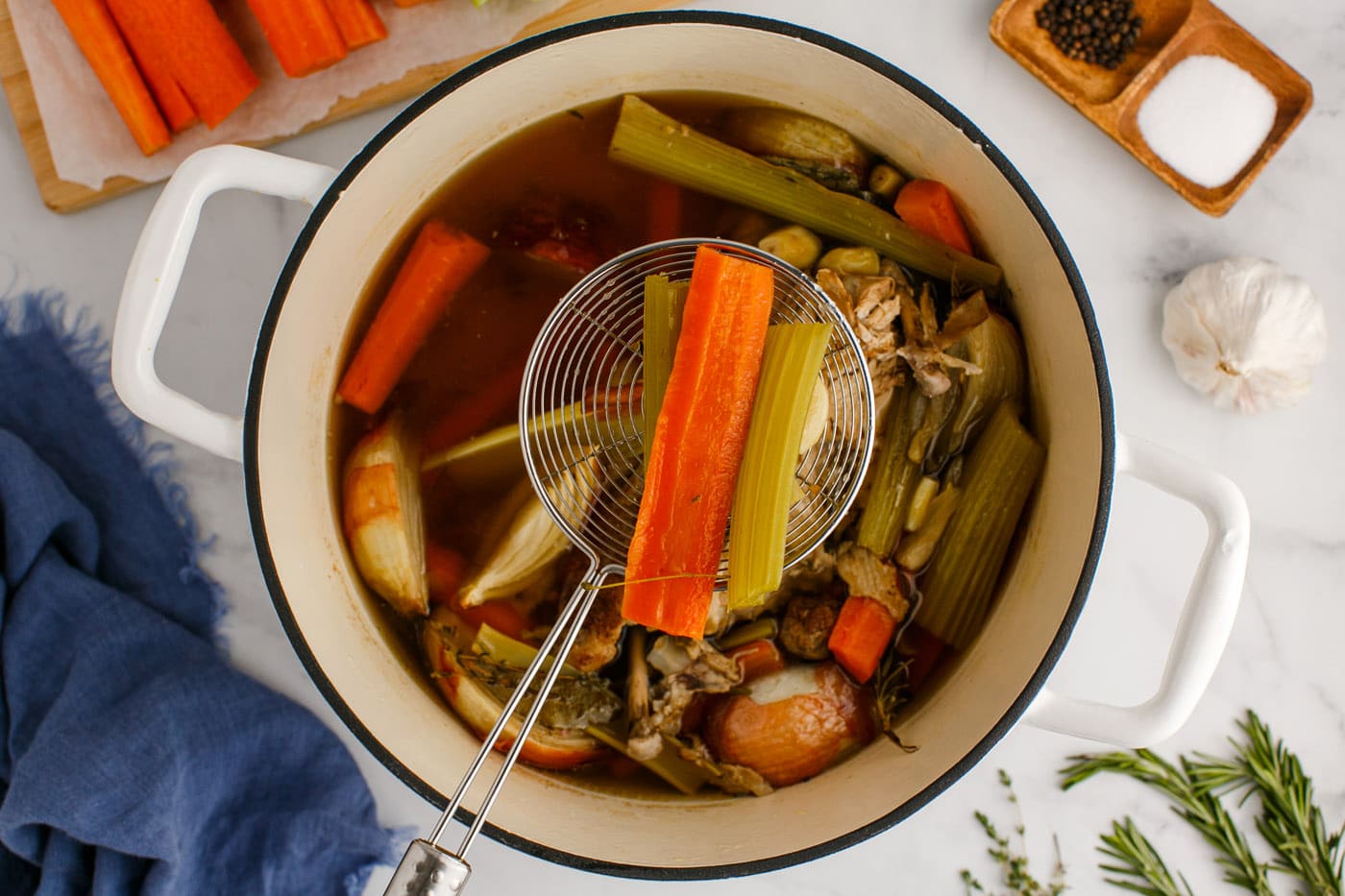
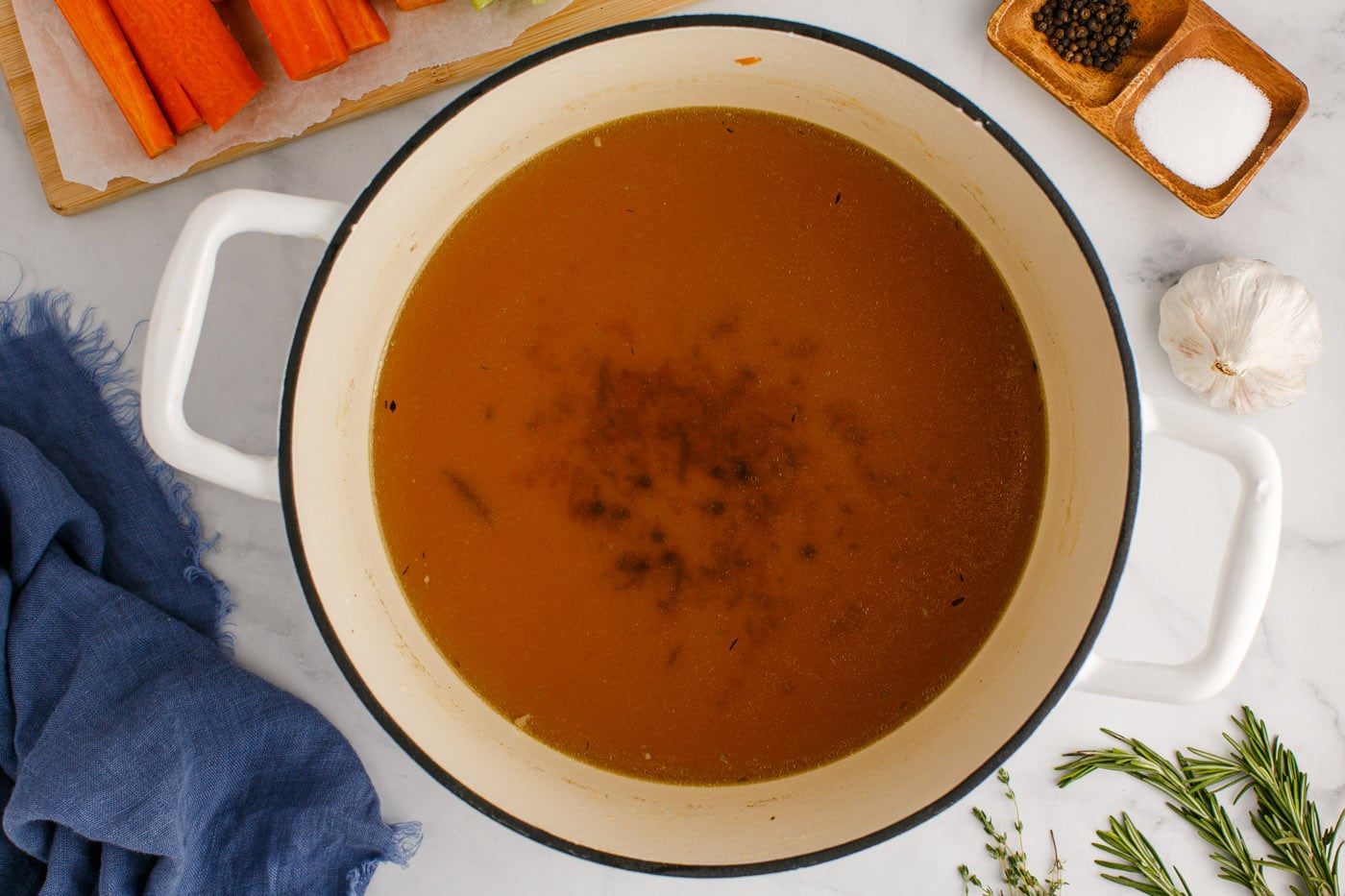
Frequently Asked Questions & Expert Tips
Chicken stock is made using the carcass of chicken, whereas broth is typically made with the meat. When cooking down the carcass, the bones release collagen which is what makes chicken stock thicker in consistency.
Store homemade chicken stock in an air-tight container, preferably a mason jar with a sealed lid, kept in the refrigerator for up to 7 days. This recipe yields 2 quarts, so you can store it in a 64-ounce mason jar or two 32-ounce jars.
Yes! It’s important to let the stock cool before transferring to a freezer-safe mason jar or plastic air-tight container. Leave some space at the top (about an inch) so the stock has room to expand when frozen. Freeze for up to 3 months.
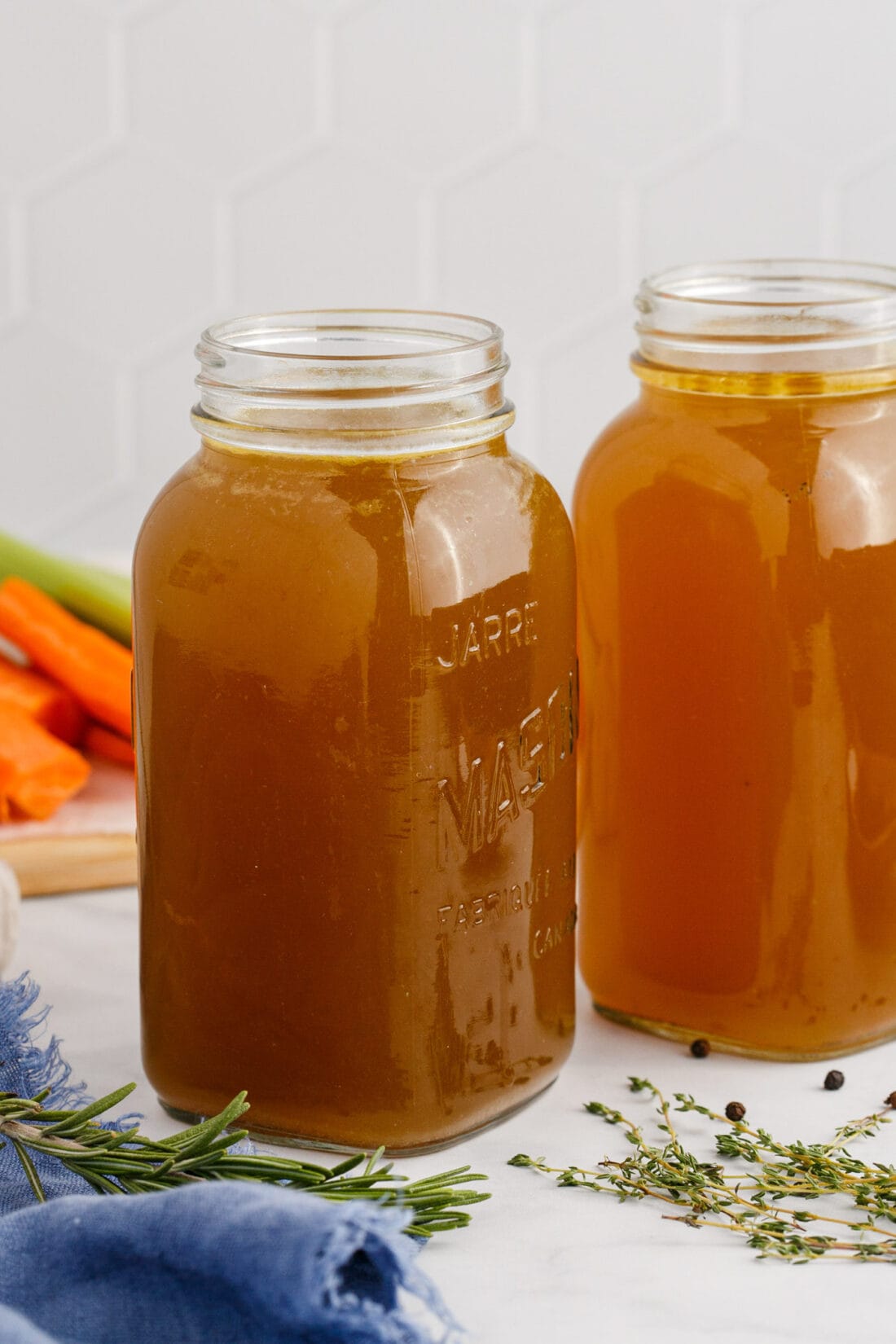
Serving Suggestions
Homemade chicken stock has many, many different uses. You can toss noodles straight into the pot with the veggies that you cooked it down with to make a mouth-watering chicken noodle soup, or use it whenever a recipe calls for stock.
Recipes That Use Chicken Stock
I love to bake and cook and share my kitchen experience with all of you! Remembering to come back each day can be tough, that’s why I offer a convenient newsletter every time a new recipe posts. Simply subscribe and start receiving your free daily recipes!
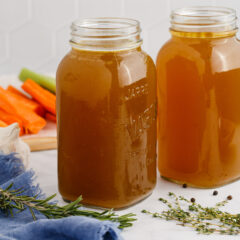
Homemade Chicken Stock
IMPORTANT – There are often Frequently Asked Questions within the blog post that you may find helpful. Simply scroll back up to read them!
Print It Rate ItIngredients
- 2 rotisserie chicken carcasses picked, but not cleaned
- 4 medium yellow onions
- 6 medium carrots chopped
- 8-10 celery stalks chopped
- 12 cloves garlic
- 4 bay leaves
- 16 sprigs fresh thyme
- 2 sprigs rosemary
- 2 teaspoons whole peppercorns
- 4 teaspoons sea salt more to taste
- 20 cups cold water or enough to almost cover the chicken
Things You’ll Need
- two 32 ounce mason jars or one 64 ounce mason jar
Before You Begin
- This recipe uses the bones from two rotisserie chickens. You want the bones to be mostly picked of the meat, but not completely cleaned off. The meat will help add flavor to the stock.
- Store homemade chicken stock in an air-tight container, preferably a mason jar with a sealed lid, kept in the refrigerator for up to 7 days. This recipe yields 2 quarts (64 ounces) total, so you can store it in a 64-ounce mason jar or two 32-ounce jars.
- To freeze: It’s important to let the stock cool before transferring to a freezer-safe mason jar or plastic air-tight container. Leave some space at the top (about an inch) so the stock has room to expand when frozen. Freeze for up to 3 months.
Instructions
- In a large stockpot, place your chicken carcasses. You may need to break one down a little bit to try to keep them lower in the pot.You will need a 14-quart stockpot or larger for a full batch, or a 7-quart stockpot for a half batch.
- Add all your remaining ingredients plus 20 cups of water or enough to almost cover the chicken. If you are stacking them, you will need to keep that in consideration.
- Bring to a boil on medium-high heat, then reduce to low heat and simmer for 4 hours, uncovered. Taste the broth after 3 hours and add more salt if needed.
- Strain out any large pieces with a slotted spoon. Use a cheesecloth or a fine strainer to catch any smaller pieces. Repeat as needed. Spoon off any fat that rises to the top – sometimes it is easier to do this when it is cool as the fat will harden on the top.
- Allow to cool then transfer to an air-tight jar or container.
Nutrition
Lindsay Formaro
Latest posts by Lindsay Formaro (see all)
- Lasagna Soup - February 26, 2024
- Monster Cupcakes - October 4, 2023
- Brownie Trifle - September 27, 2023
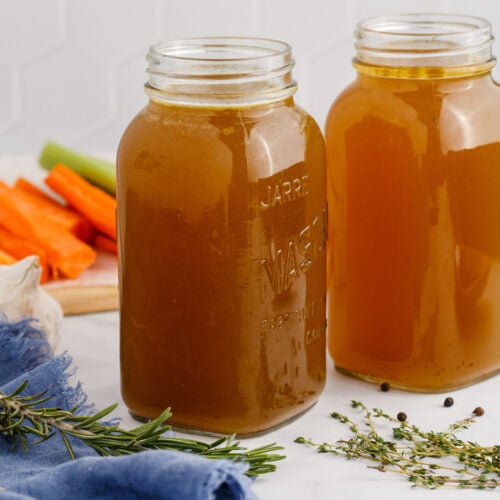










Leave a Reply